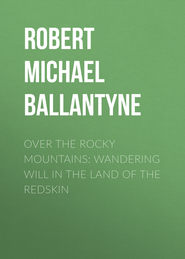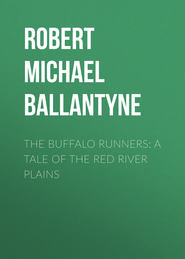По всем вопросам обращайтесь на: info@litportal.ru
(©) 2003-2024.
✖
Hudson Bay
Настройки чтения
Размер шрифта
Высота строк
Поля
Chapter Three.
Description of the Hudson Bay Company—Their forts and establishments—Food—Articles of trade and manner of trading
In the year 1669, a Company was formed in London, under the direction of Prince Rupert, for the purpose of prosecuting the fur-trade in the regions surrounding Hudson Bay. This Company obtained a charter from Charles the Second, granting to them and their successors, under the name of “The Governor and Company of Adventurers trading into Hudson’s Bay,” the sole right of trading in all the country watered by rivers flowing into Hudson Bay. The charter also authorised them to build and fit out men-of-war, establish forts, prevent any other company from carrying on trade with the natives in their territories, and required that they should do all in their power to promote Discovery.
Armed with these powers, then, the Hudson Bay Company established a fort near the head of James Bay. Soon afterwards, several others were built in different parts of the country; and before long the Company spread and grew wealthy, and eventually extended their trade far beyond the chartered limits.
With the internal economy of the Company under the superintendence of Prince Rupert, however, I am not acquainted; but as it will be necessary to the reader’s forming a correct idea of the peculiarities of the country and service, that he should know something of its character under the direction of Sir George Simpson, I shall give a brief outline of its arrangements.
Reader, you will materially assist me in my description if you will endeavour to draw the following landscape on the retina of your mind’s eye.
Imagine an immense extent of country, many hundred miles broad and many hundred miles long, covered with dense forests, expanded lakes, broad rivers, wide prairies, swamps, and mighty mountains: and all in a state of primeval simplicity—undefaced by the axe of civilised man, and untenanted by aught save a few roving hordes of Red Indians and myriads of wild animals. Imagine amid this wilderness a number of small squares, each enclosing half a dozen wooden houses and about a dozen men, and between each of these establishments a space of forest varying from fifty to three hundred miles in length; and you will have a pretty correct idea of the Hudson Bay Company’s territories, and of the number of and distance between their forts. The idea, however, may be still more correctly obtained by imagining populous Great Britain converted into a wilderness and planted in the middle of Rupert’s Land. The Company, in that case, would build three forts in it—one at the Land’s End, one in Wales, and one in the Highlands; so that in Britain there would be but three hamlets, with a population of some thirty men, half a dozen women, and a few children! The Company’s posts extend, with these intervals between, from the Atlantic to the Pacific Ocean, and from within the Arctic Circle to the northern boundaries of the United States.
Throughout this immense country there are probably not more ladies than would suffice to form half a dozen quadrilles; and these—poor banished creatures!—are chiefly the wives of the principal gentlemen connected with the fur-trade. The rest of the female population consists chiefly of half-breeds and Indians; the latter entirely devoid of education, and the former as much enlightened as can be expected from those whose life is spent in such a country. Even these are not very numerous; and yet without them the men would be in a sad condition, for they are the only tailors and washer-women in the country, and make all the mittens, moccasins, fur caps, deer-skin coats, etcetera, etcetera, worn in the land.
There are one or two favoured spots, however, into which a missionary or two have penetrated; and in Red River Settlement (the only colony in the Company’s territories) there are several churches and clergymen, both Protestant and Roman Catholic.
The country is divided into four large departments: the Northern department, which includes all the establishments in the far north and frozen regions; the Southern department, including those to the south and east of this, the post at the head of James Bay, and along the shores of Lake Superior; the Montreal department, including the country in the neighbourhood of Montreal, up the Ottawa River, and along the north shore of the Gulf of St. Lawrence and Esquimaux Bay; and the Columbia department, which comprehends an immense extent of country to the west of the Rocky Mountains, including the Oregon territory, which, although the Hudson Bay Company still trade in it, now belongs to the Americans.
These departments are divided into a number of districts, each under the direction of an influential officer; and these again are subdivided into numerous establishments, forts, posts, and outposts.
The name of fort, as already remarked, is given to all the posts in the country; but some of them certainly do not merit the name—indeed, few of them do. The only two in the country that are real, bonâ fide forts, are Fort Garry and the Stone Fort in the colony of Red River, which are surrounded by stone walls with bastions at the corners. The others are merely defended by wooden pickets or stockades; and a few, where the Indians are quiet and harmless, are entirely destitute of defence of any kind. Some of the chief posts have a complement of about thirty or forty men; but most of them have only ten, five, four, and even two, besides the gentleman in charge. As in most instances these posts are planted in a wilderness far from men, and the inhabitants have only the society of each other, some idea may be formed of the solitary life led by many of the Company’s servants.
The following is a list of the forts in the four different departments, as correctly given as possible; but, owing to the great number in the country, the constant abandoning of old and establishing of new forts, it is difficult to get at a perfectly correct knowledge of their number and names:—
Northern Department
York Fort (the depôt).
Churchill.
Severn.
Oxford House.
Trout Lake House.
Norway House.
Nelson River House.
Berens River House.
Red River Colony.
Fort Garry.
Stone Fort.
Manitoba House.
Fort Pelly.
Cumberland House.
Carlton House.
Fort Pitt.
Edmonton.
Rocky Mountain House.
Fort Aminaboine.
Jasper’s House.
Henry’s House.
Fort Chipewyan.
Fort Vermilion.
Fort Dunvegan.
Fort Simpson.
Fort Norman.
Fort Good Hope.
Fort Halkett.
Fort Resolution.
Peel’s River.
Fort Alexander.
Rat Portage House.
Fort Frances.
Isle a là Crosse.
Southern Department
Moose Factory (the depôt).











